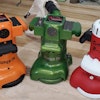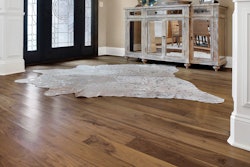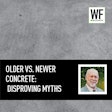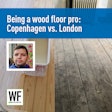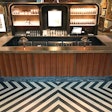The Problem
Recently I made a visit to a home that had a problem with a European-style floating floor. The homeowners complained about some shrinking between boards and some movement in the floor. The problems sounded like fairly minor issues, likely the result of some small corner-cutting during installation.
The Procedure
The floating floor had glued joints and was installed in an existing home in the Pacific Northwest over a hydronic radiant heating system—one that uses pipes filled with heated water to transmit heat. Although the system was used to heat several rooms, it was governed by a single, dial-type thermostat.
The Cause
Although it had sounded like the problems were minor, in fact, the floor was a mess. In addition to the gapping and movement the homeowners had described, which was certainly in evidence, the entire surface of the floor was showing serious cupping at the edges of the boards, and a strange rippling pattern in the middle. Everything suggested some serious heat and humidity issues.
Using my infrared spot thermometer, I spot-checked the surface temperature of the floor in each room. The temperatures ranged from 75.7° to 92.9°F. Of seven areas tested, four were hotter than the 82°F maximum surface temperature specified. This also showed how unevenly the radiant heating system was operating.Next I checked the moisture content of the flooring, which typically should be in the 8% to 10% range. It registered low on the moisture meter; I later did oven-dry tests revealing the average MC was a measly 4.22%, or about half what it should have been. This floor was cooked!
The excessive levels of heat had dried out the floor. As wood dries, it shrinks. In an engineered floor like this one, the hardwood wear layer shrinks more than the plywood core, which leads to cupping. In this particular product, the core was made of vertical-grain softwood. It also shrunk in response to the heat, but the shrinkage varied with the grain of the wood, resulting in that funny rippling effect on the surface of the floor. And the gapping issue? It seems the installer neglected to apply glue to some of the joints, so as soon as there was some stress on the floor, it just started to come apart in sections.
How to Fix the Floor
Given the extent of the damage, there really wasn’t a lot that could be done to salvage this floor, other than to use it as a cautionary tale.
In the Future
This situation illustrated the two biggest sources of problems with hardwood and radiant heat: improper installation and improper operation.
For starters, I would have suggested putting in an updated digital thermometer (my preference is a quick-recovery thermostat, which helps minimize radical swings in temperature that can “shock” a wood floor). While older systems can’t always be retrofitted into separately controlled “zones” like newer systems, at the very least the system should have been recalibrated to deliver more even heat distribution. The floor (or large areas of it, at least) was being heated well past the maximum allowable temperature. All radiant-heat approved wood floors have their own limit specified by the wood flooring manufacturer.
The bottom line is that, even when using wood floors approved for use over radiant heat, care has to be taken to ensure the heating system can be operated within the guidelines required by the floor’s manufacturer, and that, after installation, it is.
For more on installing over radiant heat, see "Heat Wave" from the October/November 2007 issue.














